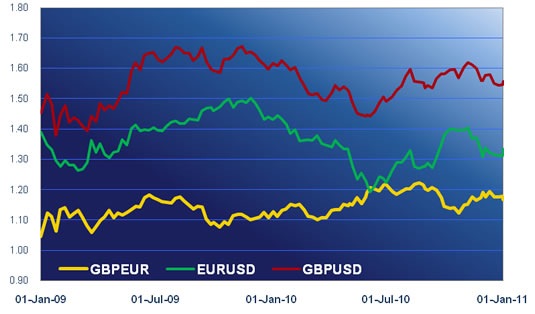– But not against the commodity dollars
– A low-key day looks likely
Good morning. Nature, the “international weekly journal of science”, has published a paper entitled “Natural wealth”. Written by Andrew Haldane, executive director of financial stability at the Bank of England, and Robert May, a theoretical ecologist at the University of Oxford, it argues that the stability of complex networks of linked dependencies that make up the world’s financial system can be tested using a simplified ecological mode. Their gist is that individual parts of the system – banks, retailers, natural events, etc. – do not operate in isolation but are part of the whole financial ecology. It all smacks of the Lorenzian “butterfly effect”: Sterling went down yesterday because some clot ran over a hedgehog last Thursday.
It didn’t go down against everything though (perhaps as a result of Bill Ackroyd ordering a new washing machine). The pound went up against the commodity currencies and fell against the majors. The Australian and New Zealand dollars, the rand and, to a lesser extent the Canadian dollar, fell from favour as a result of lower equity and commodity prices. The Aussie failed to take advantage of a leap in inflation expectations. The Australian public believes the floods will help to take prices higher, faster, lifting the inflation rate to 4.6%. A month ago they were going for 2.8%.
The pound came to grief because of some dispiriting employment numbers. Although the number of unemployed people went up by only 49,000 in the three months to November, total employment was down by 69,000 over the same period. It means another 20,000 non-workers have dropped off the radar. The number of economically inactive people was up by 89,000; nearly half of them had decided to take early retirement. There were 157,000 redundancies in the three months. Against that background, investors found it difficult to enthuse about the 4,100 fall in jobless claimants or the 2,000 improvement to the previous month’s number. They were interesting adjustments but irrelevant in the context of the two and a half million folk who cannot find a job.
In the States a stronger than expected 16.7% increase in the monthly number of building permits was partially offset by a weaker than expected -4.3% fall in the number of housing starts. Today’s figures for existing home sales are predicted to be up by 4.5%. Other US data this afternoon include weekly jobless claims, leading indicators and the Philadelphia Fed’s manufacturing survey. Canada reveals December’s leading indicators and wholesale sales for November. Europe has little to say for itself. Germany’s producer price index (factory gate prices) was up by 5.3% in 2010. ZEW’s expectations survey will give a feel for Swiss business sentiment. The Confederation of British Industry’s industrial trends survey will reveal the state of manufacturers’ order books. Tonight New Zealand retail sales and Australian export/import prices are the only useful figures from down under.
Sterling took a bit of a tonking after yesterday’s employment figures. It slipped further in the Far East this morning but after losing a cent against the euro and the dollar it seems to have found a base and has broken above its two-day downtrend against the euro. That might not mean a recovery lies in store but it should mean an easing of the downward pressure.






